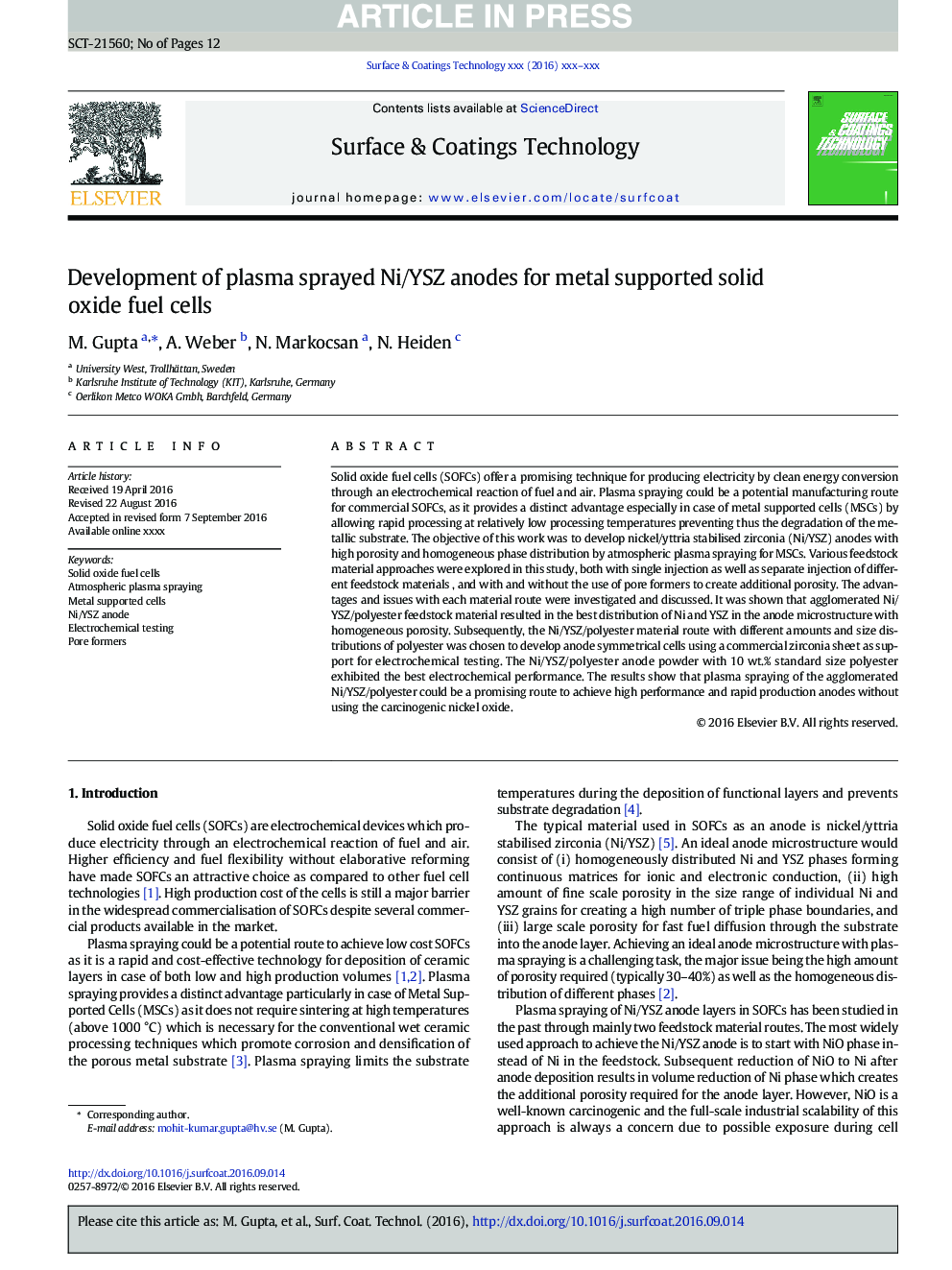| Article ID | Journal | Published Year | Pages | File Type |
|---|---|---|---|---|
| 5465454 | Surface and Coatings Technology | 2017 | 12 Pages |
Abstract
Solid oxide fuel cells (SOFCs) offer a promising technique for producing electricity by clean energy conversion through an electrochemical reaction of fuel and air. Plasma spraying could be a potential manufacturing route for commercial SOFCs, as it provides a distinct advantage especially in case of metal supported cells (MSCs) by allowing rapid processing at relatively low processing temperatures preventing thus the degradation of the metallic substrate. The objective of this work was to develop nickel/yttria stabilised zirconia (Ni/YSZ) anodes with high porosity and homogeneous phase distribution by atmospheric plasma spraying for MSCs. Various feedstock material approaches were explored in this study, both with single injection as well as separate injection of different feedstock materials , and with and without the use of pore formers to create additional porosity. The advantages and issues with each material route were investigated and discussed. It was shown that agglomerated Ni/YSZ/polyester feedstock material resulted in the best distribution of Ni and YSZ in the anode microstructure with homogeneous porosity. Subsequently, the Ni/YSZ/polyester material route with different amounts and size distributions of polyester was chosen to develop anode symmetrical cells using a commercial zirconia sheet as support for electrochemical testing. The Ni/YSZ/polyester anode powder with 10Â wt.% standard size polyester exhibited the best electrochemical performance. The results show that plasma spraying of the agglomerated Ni/YSZ/polyester could be a promising route to achieve high performance and rapid production anodes without using the carcinogenic nickel oxide.
Keywords
Related Topics
Physical Sciences and Engineering
Materials Science
Nanotechnology
Authors
M. Gupta, A. Weber, N. Markocsan, N. Heiden,
